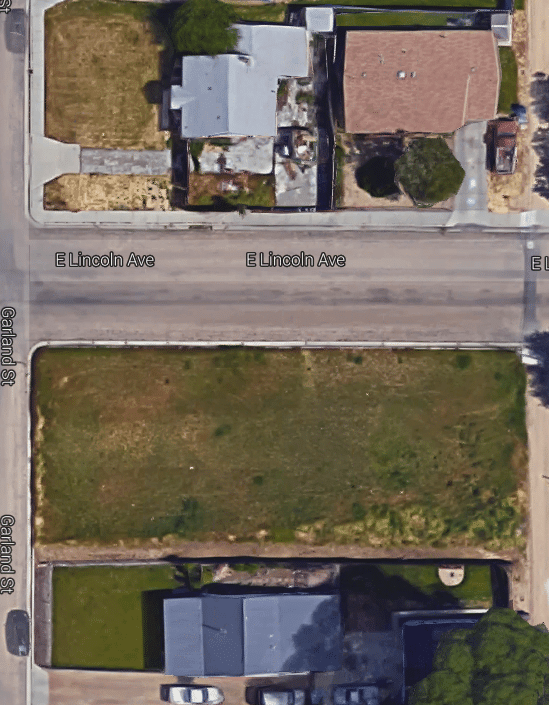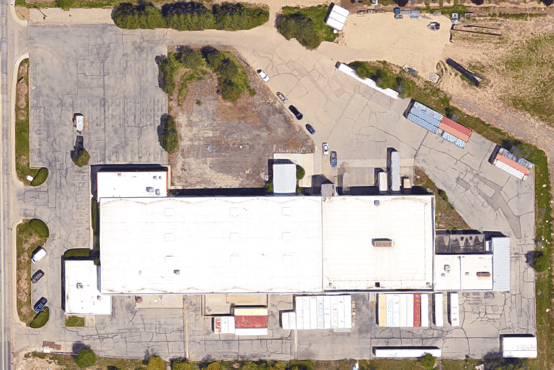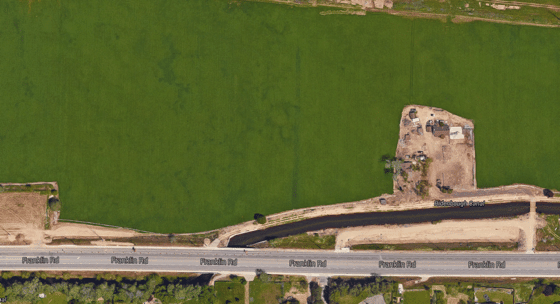Achievable nuclear nirvana – not so wild dreams by Nick P.
A recent article titled U-Battery – Micronuclear power with intriguing business model inspired a commenter with the pseudonyum of Nick P. to share some visionary power system ideas.
There are plenty of other people who offer hazy visions of what our future energy system might include. The difference between Nick P.’s fission-enabled future and the 100% wind, water and sun mirages of people like Mark Z. Jacobson and Amory Lovins is that his proposals are technically achievable. The WWS proposals sound warm and fuzzy, but serious efforts to achieve that goal are doomed to require great sacrifices and probably a far smaller human population.
Nick’s ideas are worthy of increased attention and may stimulate a useful discussion, but there is a better chance of that happening if they are promoted to the front page instead of being buried in a comment thread.
With his permission, here are Nick’s thoughts for your consideration.
So here is a vacant lot a few blocks away from my house:
Sounds like one of these would squeeze in juuussst perfect right there.
I know that this reactor is supposed to be air cooled, which is not a bad idea in general, but if they were to put one of them in around here it would be just about a perfect situation to put in some district heating lines while we were at it and put the waste heat to use.
Nice and toasty in the winter, all the hot water you want, run absorption chillers for A/C in the summer. No need to turn the thermostat up/down! Plenty more where that came from!
Delightful.
As long as I’m dreaming in technicolor here then while the road is ripped up putting in the district heating pipes they might as well finally get fiber optic lines into all the houses as well. Co-locate the network equipment in the same building as the plant, nice little side business and it would be physically safe in a good sturdy concrete building like that. Have our own little local micro-ISP, we could call it AtomWeb or something.
Mmmm, I like it already.
When we talk about ‘Fission is the new fire’ I’d love to see the world go whole-hog with the idea, what else could we do if a nuclear plant is ‘just’ another nondescript industrial building with a couple of coolers on the side of it?
Here’s another idea:
That building there use to be an Eddy’s Bread bakery, it’s been more or less vacant the last few years with a string of short lives businesses renting out the little office on the side of it.
Lets say we get another commercial bakery in there of some sort, and we have one of these mini-reactors either co-located on site or very close by.
Why not use some of the reactors heat to melt a loop of solar salt or something like it, then you could pipe the salt into the bakery and use it to bake the bread? Like the ovens would have a radiator grid for the salt to flow through rather than electric heating elements or gas burners.
Oh, and of course while we’re at it close-to-free space heating for the building and snow melting/deicing in the parking lot.
Lets go a step even further, pan just a touch south on that same map and you’ll find a farm field:
Every year it seems like all they grow is corn and corn alone, maybe they’d be interested in a new business opportunity?
See I’m thinking greenhouses, which are traditionally expensive to heat but should be a lot more reasonable with the waste heat of a nuclear plant next door. What should they grow? Well you could do hydroponic vegetables and the like Which Would Be Fine, getting an extra harvest or two per year would probably make it worth it alone, but I have another idea.
See there’s nothing stopping you from keeping these hypothetical greenhouses at tropical conservatory temperatures even in the depth of winter, so I’m thinking bananas.
Hear me out! Right now the banana you’ll find in the grocery stores is a variety called the Cavendish which didn’t use to always be the case, the variety that was cultivated back in the day was the Gros Michel. Cultivation switched from the Gros Michel to the Cavendish because a fungal infection called Panama Disease essentially wiped it out forcing the switch to a variety that is resistant. (This is why ‘banana’ flavored candy tastes kind of banana-ey but different, the flavoring is based on the Gros Mitchel and not the Cavendish.)
But you know what? This is Idaho, there aren’t any bananas growing within a thousand miles or more of here. This very isolation means you could grow the Gros Michel banana here in this greenhouse without fear of a tropical fungal disease wiping them out.
Unique crop, check.
Appeal to the ‘locally grown’ crowd, check.
Higher value than a commodity like corn, check.
I like this idea also.
This is how integrated I’d like to see nuclear power in our society.
So, what are your visions of a fission-based future? How would it be new and improved from our current abject dependence on hydrocarbon/carbohydrate combustion?
Think local; apply globally.





The Eden Project showed that it could be done, and nuclear heat can do it for next to nothing in dollars and carbon. Why the hell not?
Well, you might have issues with slow maturity, but that’s something for the bean-counters to settle.
Good notions!
Some of that sounded right up Walt Disney’s pre-Epcot alley for integrating nuclear power into an _enlightened_ society so you had very respectable company!
James Greenidge
Queens NY
Bananas, good. Cashews, better. Currently grown entirely in the tropics, and (if you’ve ever bought any) VERY high prices for a VERY desirable product. The dwarf cashew tree grows to about 20 feet and matures rapidly. Lots of interesting uses for other parts of the fruit, too.
The greenhouse concept can go even further.
Many people leave northern climes for the warm south when they reach retirement age.
Their age and the cold are just not compatible.
What if there were small nuclear-heated retirement communities in Massachusetts, Michigan, etc.? It could be a very nice place for someone to move.
A very large heated pool and a producing arboretum (with bananas, mangoes, and cashews for starters).
If you can do greenhouses, you can also do hatcheries. In the northern climes, salmon and trout grow great at the right temps. While they can survive the cold winter water temps, they get a lot larger and can be released to the ocean (salmon) larger which means their survivability improves, and more fish returning in a year or two. Larger fish tend to lead to more fish meat in the freezer. Cheers –
As an aside, one needn’t always tear up the street to install residential fibre optic. Directional drilling works just fine for small cable bundles. They’ve been doing that the past week in our neighborhood, its surprising how smooth and fast it goes, leaving no more than a 4″ hole to be plugged every half block.
But yes, CHP ftw.
I really like this post. My belief is when the original visionaries were predicting a future world of energy supplied by small nuclear power reactors, this is the type of world they were dreaming about. With reactors so safe they became common place. With safety so inherent in the design they were not regulated any more heavily than other energy sources. Yes there will always be a need for large reactors for some applications.
I’m wondering, Nick P have you considered if this idea is expanded to the max, would it need to be connected to an external grid? Or is it a self sustaining possibility? If self sustaining (for a period) can we get there? New navy sub cores are good for the life expectancy of the sub, ~40 years, without refuel. These independent systems either have to have a long life, or refuel on line, or a backup for refuel and End of Life. These are the type of issues that need to be addressed for these ideas to become operational.
If these systems are tied to the grid, with the idea of a grid for backup, they are just another P-in-the-A that must be juggled by load dispatchers because they might go down for some reason. I’m also curious if the economics are possible. Can the “users” actually support the cost? Of course, I have no answers, just questions. Thoughts?
Gen4 Energy. Lead-cooled FNR good for 10 years.
Terra Power Sodium cooled FNR, shooting for sixty years.
Still, all good things come to an end, and when these babies are EOL’ed there has to be some mechanism for standby, storage, and/or rapid core-swap to ensure minimal power disruption.
Six or more hours storage is good for any generator that must supply variable load. Cal Abel has a promising study of a solar salt buffer for S-PRISM: Energy Storage: Improving Fast Reactor Economics.
You don’t necessarily need such a rapid turnaround if you’re on the grid; anything that uses heat from steam or molten salt can use resistance heat for backup, so all you really need to do is have adequate reserves and fat enough wires to serve the must-have loads.
I mentioned rapid turn-around / fall-over because that is what Thorcon features for their modular MSR design. As I read Thorcon’s system diagram there really isn’t any lag when switching from an old core to a new one, as the new one is already positioned in its own silo and all one needs do is re-route the salt flow from one core to the other.
Gen4 and TerraPower are both designed for standalone off-grid use. I don’t know how they do their core-swaps, but should look into it. S-PRISM is a different beast of course, but is fully designed and ready for license consideration should NRC ever feel up for it.
Cal Abel’s proposed lash-up is not tied to any particular reactor type, other than it must be medium temperature: any liquid metal or molten-salt design would do. He chose S-PRISM for this study because it is most mature, most ready, and about whose operation and economics most is known. Abel’s system is not off-grid in the sense of Gen4/Terrapower: he specs 5 standard COTS OCCT’s for peaking and backup so a gas connection is required. Turbine exhaust heat is recovered by the salt buffer, so thermal efficiency in actual operation is about that of a CCGT, while still getting (as I read it) over 99% of total system power from fission.
All system heat is routed through the salt system, eliminating need for hydrogen suppression at the steam generator, and decoupling BOP from NRC purview. All-in final electricity cost is estimated at $145/MWh greenfield installation, and $115/MWh brownfield. That’s cost for all electricity: base, variable, and peaking, working into a very windy load. Interesting concept.
Engineer-Poet February 17, 2016 at 7:22 AM
“You don’t necessarily need such a rapid turnaround if you’re on the grid”
I agree with this, but…. this introduces the same complication for the base load plants that they now have with variable sources (wind and solar, but agree the down time for this type of nuke can be “scheduled).
The base load plants still have a fair complaint, maintaining backup that is not being used when these new plants are up. Long range, I think we need to eliminate THAT problem. If these designs are serious, stand on your own two feet and disconnect from the grid, all the time. Which means to me refuel on line, or have your own backup like a gas burner. To me it’s simple, I’ll not criticize wind and solar for not being stand alone, while promoting a nuke of this type that is not stand alone.
I’m still for this concept, but I’ll not support a concept that requires a base load plant to “pay for” my intermittent capability. Large base load plants are still needed for a lot of applications. If they are required to provide resistance heat for backup, this design just adds to their economic feasibility problem.
I can’t support any new concept that claims to be feasible and affordable unless they unhook from the grid and prove it.
It’s much more efficient for a bunch of plants to share a single set of reserves, rather than each plant having its own. If a plant is 0.999 reliable, that last 0.1% is still about 9 minutes of downtime per year with all the headaches that implies. If several hundred plants reserve 1% of their capacity for outages and share that excess between them, the risk of outage for any consumer goes down to close to zero. Is an extra 1% of cost worth it to achieve 0.99999 reliability? My guess is that it is.
Going down for refueling in the minimum demand times of spring and fall allows plenty of excess capacity to stand in for the plants which are out of service. Or, one shared combustion-based fast-start turbine can provide the backup for a host of emission-free plants.
It really doesn’t make sense to do this if you’ve got periods of excess system capacity that can cover for scheduled events without having to add whole new generators. If your weekly peak demand is down to 70% of the seasonal peak, you can take down 20% of your capacity for service without a hitch. If you’ve got a unit that takes 1 week to refuel every 10 years, this just isn’t going to be a major problem.
I thought we were talking about outages of very small nuclear plants, which can operate as base load almost by definition. Rather than having a whole backup system for both electric power and district heat to cope with refueling and service, it would make more sense to network a whole bunch of such units and schedule outages for times when the system as a whole has enough capacity to cover for the units that are off-line. In some future outage, the favor is returned.
I love this thinking! We need more people that think this way.
Thank you for the highlight, glad I could contribute.
Bravo good sir 🙂